Related Research Articles

The Knights of Columbus is a global Catholic fraternal service order. Membership is composed of practicing Catholic men. It is led by Supreme Knight Sir Carl A. Anderson.
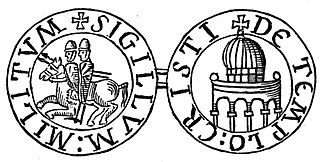
The Poor Fellow-Soldiers of Christ and of the Temple of Solomon, also known as the Order of Solomon's Temple, the Knights Templar or simply the Templars, were a Catholic military order founded in 1119, headquartered on the Temple Mount in Jerusalem through 1128 when they went to the Vatican and were recognised in 1139 by the papal bull Omne datum optimum. The order was active until 1312 when it was perpetually suppressed by Pope Clement V by the bull Vox in excelso.

Michael Joseph McGivney was an American Catholic priest based in New Haven, Connecticut. He founded the Knights of Columbus at a local parish to serve as a mutual aid and fraternal insurance organization, particularly for immigrants and their families. It developed through the 20th century as the world's largest Catholic fraternal organization.

Paul Andrew Dever was an American Democratic politician from Boston, Massachusetts. He served as the 58th Governor of Massachusetts and was its youngest-ever Attorney General.
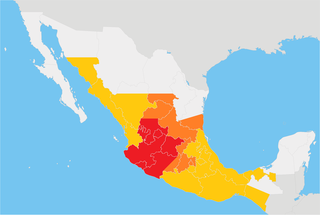
The Cristero War, also known as the Cristero Rebellion or the La Cristiada[la kɾisˈtjaða], was a widespread struggle in central and western Mexico in response to the imposition of secularist and anticlerical articles of the 1917 Constitution of Mexico, which were perceived by opponents as anti-Catholic measures aimed at imposing state atheism. The rebellion was instigated as a response to an executive decree by Mexican President Plutarco Elías Calles to enforce Articles 3, 5, 24, 27, and 130 of the Constitution, a move known as the Calles Law. Calles sought to eliminate the power of the Catholic Church and all organizations which were affiliated with it and to suppress popular religious celebrations in local communities.
The President's Organization for Unemployment Relief was a government organization created on August 19, 1931 by United States President Herbert Hoover. Its commission was to help U.S. citizens who lost their jobs due to the Great Depression. Its purpose was to coordinate local welfare agencies, without spending government money. The program ended on June 30, 1932. Its ending was because the government was not willing to help the agencies through the aid of money and this therefore led to them becoming simply overwhelmed by the magnitude of the problem of the Great Depression.

The Supreme Knight of the Knights of Columbus is the title of the chairman of the board and chief executive officer of the Knights of Columbus. The organization comprises approximately 1.8 million members in more than 14,000 councils and operates an insurance company with over $77 billion of life insurance in force, as of 2013.
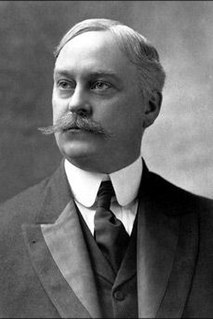
Count Edward Leo Hearn was the fifth Supreme Knight of the Knights of Columbus from April 1, 1899 to August 31, 1909.

James E. Hayes was an American politician and the third Supreme Knight of the Knights of Columbus from March 2, 1897 to February 8, 1898.
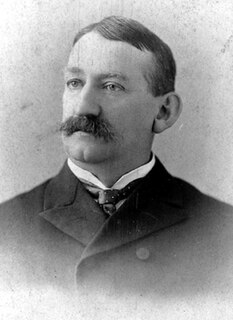
James Terrance Mullen was the first Supreme Knight of the Knights of Columbus from February 2, 1882 to May 17, 1886. He also served in the New Haven, Connecticut police and Fire Departments, and as an alderman. With his service in the Union Army and in several fraternal orders, he has been described as "veteran of fraternity."
The Knights of St Columba is a Catholic fraternal service society. Founded in Glasgow in 1919, it is named in honour of Saint Columba, a Christian missionary from Ireland who helped to introduce Christianity to some of the people in the north of Britain. The organisation describes itself as being dedicated to the principles of Charity, Unity and Fraternity. There are more than 4,300 members of the KSC, in over 240 councils across Great Britain — it features in England, Scotland and Wales. Membership is limited to Catholic men aged 16 and over, and promotes the social doctrine of the Catholic Church.

The George A. Bartlett House, also known as the Old Knights of Columbus Hall, is a Shingle style house in Tonopah, Nevada, United States. The Shingle style is more commonly found in the northeastern United States, and is almost unknown in Nevada. The house stands on a height on Mount Brougher overlooking the town. The house was built by George A. Bartlett, later a U.S. Congressman, who lost the house in the Panic of 1907. The shingled house is set on a rubblestone foundation and features an asymmetrical plan, typical of the style. The house was used as a Knights of Columbus Hall, then abandoned. Renovation began in 2008 to restore the house for use as a bed and breakfast.
Charles Pasquale Greco was an American prelate of the Roman Catholic Church. He served as Bishop of Alexandria in Louisiana from 1946 to 1973. He was also the Supreme Chaplain of the Knights of Columbus from 1961 to 1987.
The history of the Knights of Columbus and The Catholic University of America dates back to the founding of the university. The Order founded a "Knights of Columbus College".
The history of the Knights of Columbus begins with its founding in 1882 by Father Michael J. McGivney at St. Mary's Parish in New Haven, Connecticut. The Knights of Columbus was initially a mutual benefit society for a membership of practicing male Catholics. Today, it advocates for Catholic causes and provides a range of philanthropic and support services to Catholic institutions worldwide. It is also one of the world's largest insurance companies and operates the shrine to Pope John Paul II in Washington, D.C.
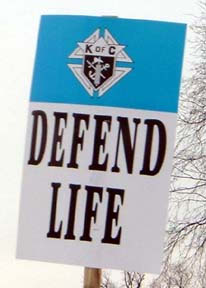
The political activity of the Knights of Columbus deals with the involvement of the Roman Catholic fraternal Order to influence public policy to promote its interests.

Monsignor Charles Alphonsus "Zip" Finn was a priest of the Archdiocese of Boston. At the time of his death, he was the oldest priest in the United States, the oldest alumnus of Boston College, and the Pontifical North American College, and the oldest Knight of Columbus.
Joseph C. Pelletier was district attorney of Suffolk County, Massachusetts and the Supreme Advocate of the Knights of Columbus. He was removed as district attorney and disbarred for blackmail and extortion.

A statue of Christopher Columbus was installed in Christopher Columbus Waterfront Park, in Boston's North End, in the U.S. state of Massachusetts. On June 11, 2020, the statue was removed for an undisclosed period after its head was decapitated by protestors on the evening of June 9, 2020.
References
- 1 2 3 Hackett, David G., "That Religion in Which All Men Agree: Freemasonry in American Culture", Univ of California Press, 2014, ISBN 9780520281677, p. 212
- 1 2 Kauffman, Christopher J. (1982). Faith and Fraternalism: The History of the Knights of Columbus, 1882–1982 . Harper and Row. p. 10. ISBN 978-0-06-014940-6.
| This article about an organization in the United States is a stub. You can help Wikipedia by expanding it. |